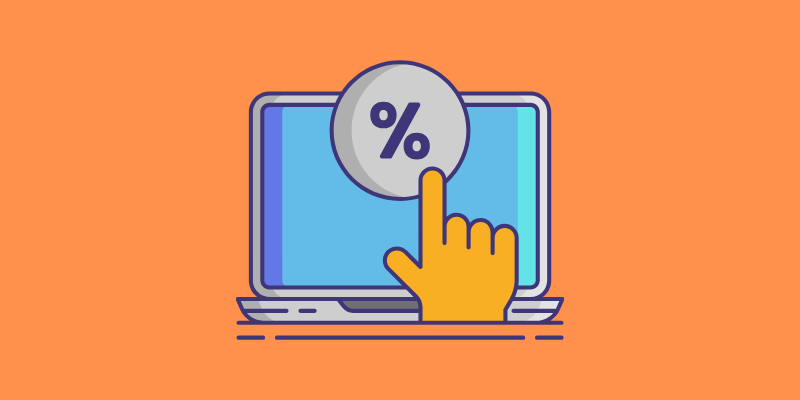Last Updated on 8 months by Ecem Ertürk
A CTR meaning is highly valued by search engines (CTR). After all, the pay-per-click paradigm dictates that the more people who click, the more money the search engine makes. Advertisers, on the other hand, value CTR. When a person types a query into a search engine, they are seeking an answer. They’re expressing a want or a need. What makes the search so useful is that people tell you exactly what they want. They’ve already determined that they require something and are now on the lookout for it. Therefore, you should know the answer to the question of what is click-through rate. You can also work with a Google ADS Agency for help with this.
What Is Click-Through Rate (CTR)?

The answer to the question of what is click-through rate is important for your business. The CTR meaning is a percentage-based performance statistic that compares the number of times an ad, organic search result, or email has been viewed to the number of times it has been clicked (impressions). It is most typically used to assess the efficiency of sponsored search, display, and email marketing campaigns, as well as ad text, subject lines, and metadata performance (titles and descriptions).
Knowing the answer to the question of what is click-through rate is necessary for marketing. The clickthrough rate may be used to determine how effective your keywords, advertising, and free listings are. The CTR is calculated by dividing the number of clicks on your ad by the number of times it is displayed: clicks impressions = CTR. Your CTR would be 5% if you got 5 clicks and 100 impressions, for example.
CTRs for your ads, listings, and keywords can all be seen in your account. A high CTR indicates that people are finding your adverts and listings to be useful and relevant. CTR meaning also affects the projected CTR for your term, which is a factor in Ad Rank. It’s crucial to note that a good CTR is determined by the type of advertisement you’re running and the networks you’re utilizing. It can assist you in figuring out which ads, listings, and keywords are effective and which ones need to be adjusted. The more closely your keywords, advertising, and listings connect to one another and to your company, the more likely a user will click on your ad or listing after looking for your keyword phrase.
What Is a Good CTR?

People have gotten desensitized to advertisements in recent years. It’s a miracle that commercials get any attention at all, what with ad-blockers, firewalls, and just ignoring the thousands of ads that crop up every day. An average click-through rate of 0.2 percent is roughly 2 site visitors per 1,000 impressions. This begs the question: what constitutes a satisfactory click-through rate? The CTR varies by industry. Check the normal CTR in your industry to determine what a good CTR would be for your organization. Once you’ve figured out what existing benchmarks and industry norms are, you can start making efforts to improve your CTR and meet your company’s objectives.
According to a recent study conducted by Google AdWords, the average click-through rate for a search ad is 1.91 percent, whereas the average click-through rate for a display ad is 0.25 percent. When a Google user searches for a certain product, search adverts display. These results appear at the very top of a Google search results page and display the most relevant ad matches for any query. While an Internet user is browsing, display adverts show on a web page. These are generally banner adverts that may be seen at the top, side, or bottom corners of a page and are accompanied by eye-catching graphics or text. Consider your industry, the set of keywords and keyword phrases you’re bidding on, and the ad’s or webpage’s channel when measuring click-through rate. When compared to other channels, industries, and keyword categories, some have a greater click-through rate.
Achieving Strong Click-Through Rates For Your Ads

CTR meaning is more than simply a metric for determining how relevant your adverts are to searchers. CTR has an impact on your Ad Rank in the search engines. The position of your ad on the search results page is determined by its ad rank. The highest bidder does not get the top spot. The advertiser with the highest Ad Rank receives it. Also, CTR is a big part of the Ad Rank equation. However, Ad Rank is a little more sophisticated. Your actual CTR is compared to Google’s estimated CTR. If you have had many ads with low clickthrough rates in the past, Google may assume that any new ads you upload to your Google Ads account will also have a low clickthrough rate. That’s why it’s important to get help from a Digital Marketing Agency.
How CTR Impacts Quality Score?
Another question as important as what is click-through rate is how CTR impacts quality score. CTR meaning is an essential measure since it allows you to better understand your consumers by revealing what works (and what doesn’t) while trying to reach your target demographic. A low CTR might suggest that you’re targeting the incorrect audience or that you’re not using compelling language to persuade them to click. Consider a paid search ad campaign that drives traffic to your website, e-commerce store, or landing page. The CTR of internet advertising indicates how effective it is at attracting potential buyers; you can then compare ad wording, ad location, and CTAs to see which has the greatest CTR.
Quality Score is a metric that determines how relevant an advertiser is in terms of keywords, ad text, and landing sites. The more relevant your adverts and landing pages are to the user, the higher your Quality Scores are likely to be. The engines’ measures of projected click-through rate, ad relevancy, and landing page experience are used to generate a Quality Score.
When a Low CTR is OK?
Another question that is as curious as what is click-through rate is when a low CTR is okay. CTR meaning is a measurement of the performance of online advertising or email campaigns for digital and online marketers. CTR is a metric that measures how users react to marketing or advertising initiatives. The measure is commonly used to determine which advertising and keywords are more effective than others. If your click-through rate (CTR) is poor, it might mean you’re targeting the incorrect demographic or wasting money on irrelevant terms. Furthermore, the statistics may be used to assess the effectiveness of various marketing channels (e.g., website 1 delivers 1 percent CTR, and website 2 returns 3.5 percent CTR).
The CTR meaning has one significant flaw. The click-through rate measures how successfully people respond to a marketing or advertising effort, but it does not transform that success into monetary worth. In other words, relying just on the click-through rate to identify how certain marketing initiatives affect sales and income is tough. As a result, it’s customary to combine this number with the conversion rate, which measures the percentage of clicks that result in real purchases. The click-through rate is calculated in conjunction with other metrics such as the open rate and bounce rate for email marketing.
Always prioritize business metrics above CTR. You should optimize your PPC ads for cost per sale if your objective is to sell as many things as possible at the lowest potential cost. Optimize for cost per lead if your objective is to create leads at a low cost per lead. CTR should not be your primary KPI unless your company’s aim is to produce a lot of PPC traffic. In fact, there are situations when a low CTR is acceptable — and even desirable. When dealing with confusing terms, this is one of those situations. Ambiguity is an unavoidable part of every PPC program. People may look for your product or service using broad terms that have diverse meanings for different people.











